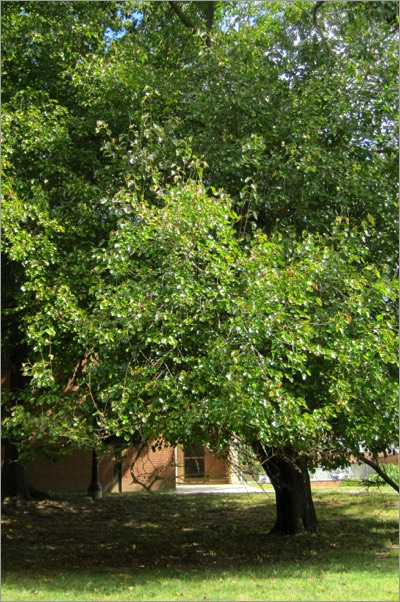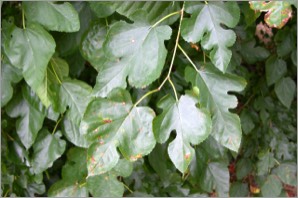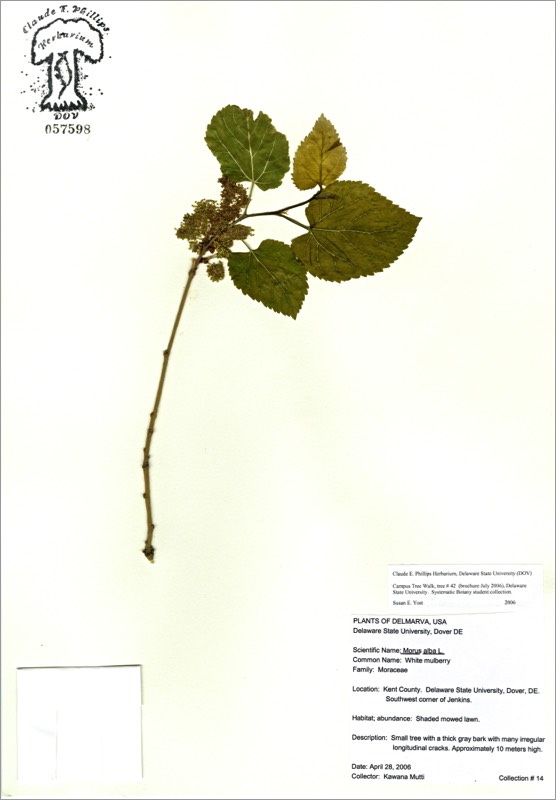*Morus alba


*Morus alba
WHITE MULBERRY
Moraceae
E. Asia
Location: map coordinates K-8 (east of retention pond, southwest of Jenkins Hall), N 39°11'13'' W 75°32'46''
Planting history: presently unknown (possibly a volunteer).
Description:
*Non-native species (not native to Delaware). On the Invasive Watchlist for Delaware; first recorded growing wild in Delaware in 1896
WHITE MULBERRY
Moraceae
E. Asia
Location: map coordinates K-8 (east of retention pond, southwest of Jenkins Hall), N 39°11'13'' W 75°32'46''
Planting history: presently unknown (possibly a volunteer).
Description:
- small- to medium-sized deciduous tree
- etymology: Morus from the Latin name for M. nigra; alba = white (fruits are sometimes white)
- leaf unlobed or 1- to 3-lobed; toothed; autumn foliage dull yellow. Leaf similar to red mulberry, but white mulberry is hairless beneath and not sandpapery
- fruit fleshy, multiple (develops from a cluster of tiny flowers); whitish, pink, purple to almost black; edible, but ripens quickly, doesn’t store well fresh (commonly sold dried in some countries like Afghanistan)
- shade-intolerant; habitat in Delaware is disturbed areas, fields, open woods. Tolerant of poor conditions
- introduced during colonial days in a failed attempt to establish a silk industry (the silkmoth larva eats only mulberry leaves, and spins a cocoon consisting of a silken thread ca 1,000-3,000 feet long; one pound of silk requires ca 2,000-3,000 cocoons)
- hybridizes with the much less common red mulberry (Morus rubra), thus threatening red mulberry’s genetic viability
*Non-native species (not native to Delaware). On the Invasive Watchlist for Delaware; first recorded growing wild in Delaware in 1896


HIT REFRESH TO START LOCATION GRAPHIC